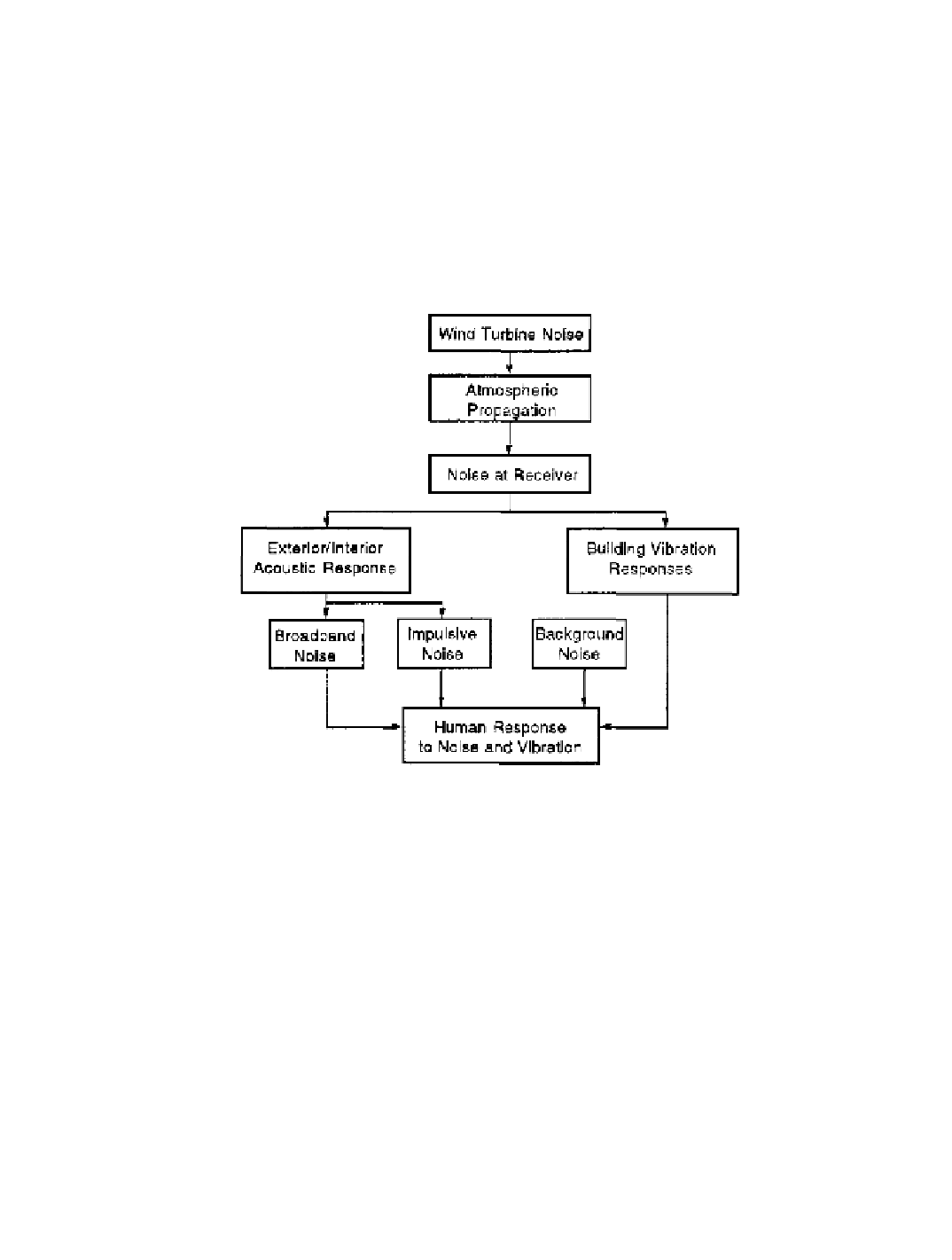Environmental Engineering Reference
In-Depth Information
Receiver Response
Evaluating the effect of receivers' exposure to noise at various locations involves deter-
mining people's responses to direct acoustic radiation as well as the acoustic and vibrational
environments inside buildings. The factors involved in such an evaluation are diagrammed
in Figure 7-32 and are explained in detail in Stephens
et al.
[1982]. Noise radiated by the
wind turbine is propagated through the atmosphere to a receiver (a person or a building),
and the characteristics of that receiver then determine the acoustic and vibration effects of
the noise. The broadband and impulsive components of the acoustic response are treated
separately, and either may be significant. Background noise and building vibrations must
also be considered in evaluating people's responses to wind turbine noise.
Figure 7-32. Factors and interactions to be considered in evaluating human response to
wind turbine noise
[Stephens
et al.
1982]
If wind turbine noise levels are below the corresponding background noise levels, they
will generally not be perceived; therefore, no adverse human response is expected. When
any noise level exceeds the
threshold of perception
,
however, there is the potential for
community response, as indicated in Table 7-1 [ISO 1971]. The data in this table were
derived from responses to noise sources other than wind turbines. Because there has been
little experience to date with community responses to wind turbines, the applicability of
Table 7-1 is tentative. The substantial variations in background noise in terms of time-of-
day and location are complicating factors.
Perception thresholds for acoustic noise and structural vibrations have been derived
separately. There are no known threshold criteria for combined effects, except in terms of
the quality of the ride in transportation vehicles [Stephens 1979].

Search WWH ::

Custom Search